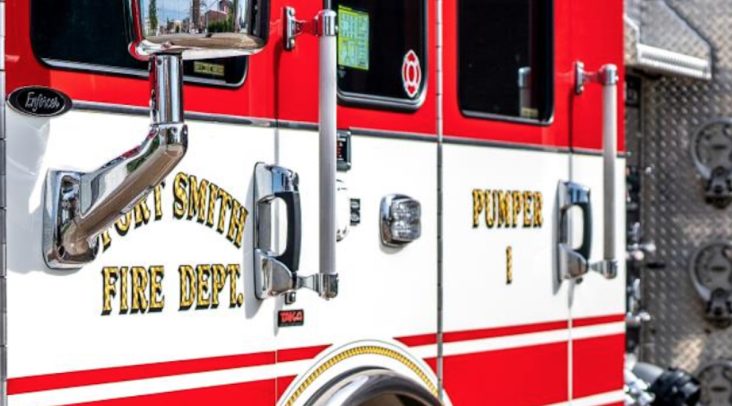Gear safety, more captains part of Fort Smith Fire Department focus
by June 3, 2024 11:37 am 500 views

The Fort Smith Fire Department succeeded in meeting its primary objectives in 2023 which including maintaining a healthy and strong workforce, ensuring thorough training, and being fully prepared to respond to emergencies, thereby reducing loss of life and property.
That was the message provided by Fire Chief Boyd Waters to the Fort Smith Board of Directors at its study session on May 28. Waters was named fire chief in March 2023 following the death of Fire Chief Phil Christensen in February 2023.
The past year also saw many retirements in the department, Waters said.
“We lost a lot of experienced personnel last year. The combined total is over 300 years, but they made sure to pass as much of their knowledge on as they could,” Waters said in his annual report on the Fort Smith Fire Department.
Recruiting new members proved to be a challenge in 2023, Waters said, noting that the department employed various strategies such as visiting local high schools, attending job fairs, engaging with college students, and connecting with EMT graduates.
“Additionally, we focused on social media posts, flyers, and word-of-mouth recommendations. As a result of our efforts, we were able to hire five candidates who have since met all requirements and become valued members of our department,” Waters said.
The FSFD firehouse record management system experienced a “catastrophic failure” in 2023, resulting in the loss of critical data, Waters said. Therefore, the department lacks a true account of incident types and numbers for the year. Though the IT department was able to recover much of the data, data from Oct. 31, 2021, to Aug. 4, 2023, was unable to be recovered, Waters said.
“Our personnel helped reenter all that we had copies of like our business plans, training hours and maintenance records. Our data from our incidents could not be recovered, so fire data from 2023 is incomplete,” Waters said.
The numbers he was able to give were from Aug. 4 to Dec. 31. During that time, there were 15,295 total calls for 2023. Of those, there were 236 fire incidents, one incident of overpressure rupture, explosion or overheat, 5,844 rescue and EMS calls, 194 hazardous condition calls, 722 service calls, 926 good intent calls, 386 false alarms or false calls, three severe weather and natural disaster calls, and one special incident.
There were 86 structure fires;, 41 property (vehicle fires), 71 natural vegetation fires, 31 outside rubbish fires, four special outside fires, and three crop fires, the report states.
Ethan Millard, division chief of operations, advocated for the department to add three captains to the rescue truck in the operations division, a memo to Waters included in the report said.
“Historically, the rescue company has been comprised of elite firefighters, and the addition of captains would enhance operational efficiency and alleviate staffing concerns. Despite hiring nine additional firefighters in 2023, staffing shortages persist due to upcoming retirements, contributing to increased overtime costs,” the memo noted.
“Trying to reduce (firefighter) exposure to carcinogenic toxins continues to be a high priority for our department,” Waters said.
FSFD installed three extractors in fire stations 2, 3, and 11. Plans are underway to install three more extractors this year, ensuring coverage for all 11 stations, the report states.
“Extractors are an important tool for providing line personnel the necessary equipment for cleaning their bunker gear after structure fires and other hazardous exposures. Extractors perform much deeper cleaning than standard washing machines, resulting in far more particulate matter and contaminants being removed from their gear that they wear and handle every shift they work,” it said.
FSFD also is working to build bunker storage rooms that provide ventilation for toxic gases that off gas from the gear and provides a completely dark environment to prevent damage caused by UV light, Waters said. The air from the storage room is removed to an outside area, so it doesn’t damage anything, he said. Station 1 has completed the first storage room.
Because apparatus equipment and maintenance costs continue to climb, the department is looking at ideas on how to extend apparatus service life. That includes the possibility of refurbishing some units and using a light truck or SUV for medical responses to keep hours and miles off the aerial trucks, Waters said.
The long range goals of the department include adding an additional battalion chief, building new classrooms and building a driving pad for driver testing.
